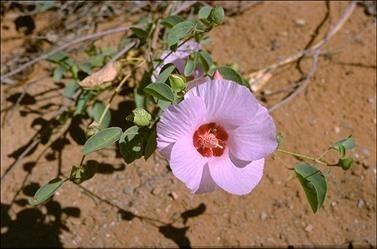Rank Species | Genus Gossypium Higher classification Cotton | |
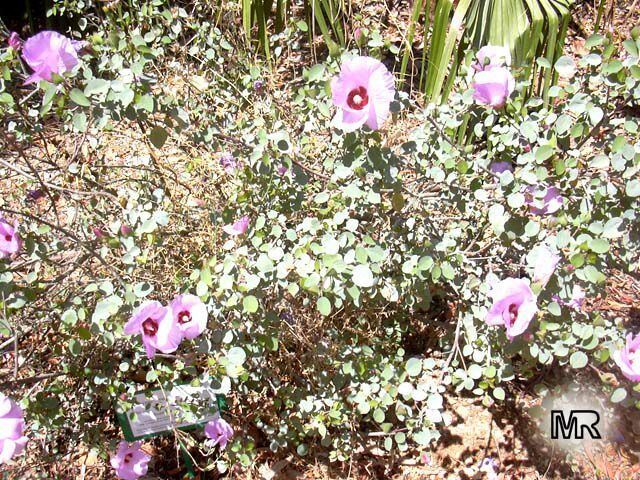 | ||
Similar Cotton, Wahlenbergia gloriosa, Swainsona formosa, Epacris impressa, Anigozanthos manglesii | ||
Sturt's Desert Rose (Gossypium sturtianum) is a woody shrub, closely related to cultivated cotton, found in most mainland states of Australia and the Northern Territory. It is also known as the Darling River Rose, Cotton Rosebush and Australian Cotton.
Contents
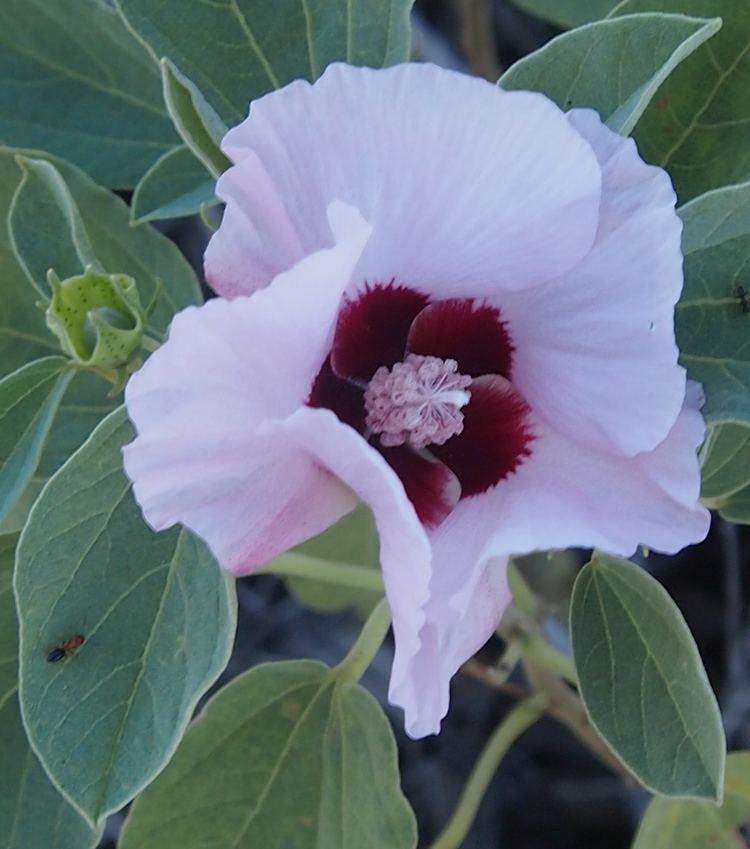
The plant has a life span of about 10 years, growing from 1–2 m tall and 1–2 m wide. The colour of the petals can range from pale pink to dark purple to maroon. The five petals are arranged in a whorl and have a dark red centre. They can be seen for most of the year but peak in late winter. They are up to 12 cm in diameter. The leaves are different shades of green, round and strongly scented when crushed.
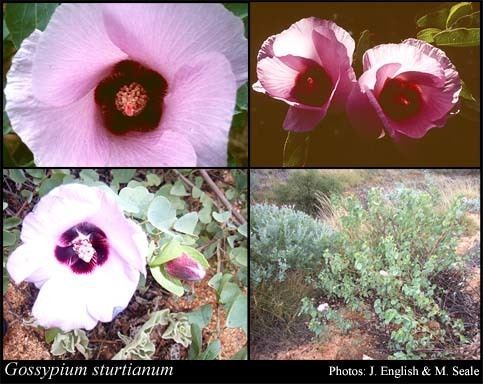
Taxonomy
Two varieties are often recognized.
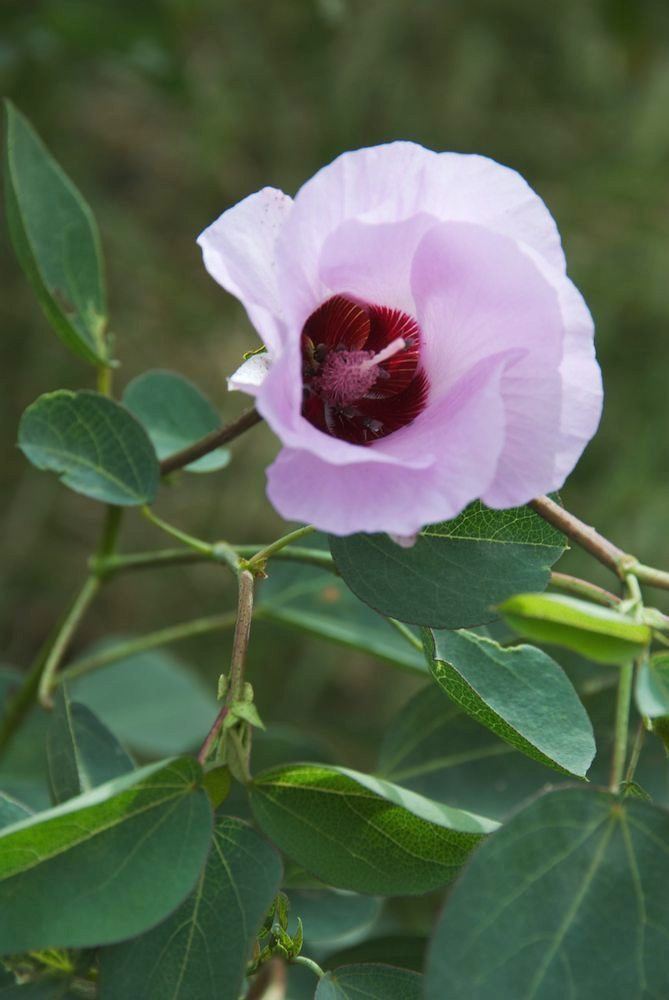
G. sturtianum var. trilobum (F.Muell.) J.H.Willis is sometimes considered a synonym of Gossypium robinsonii.
Ecology
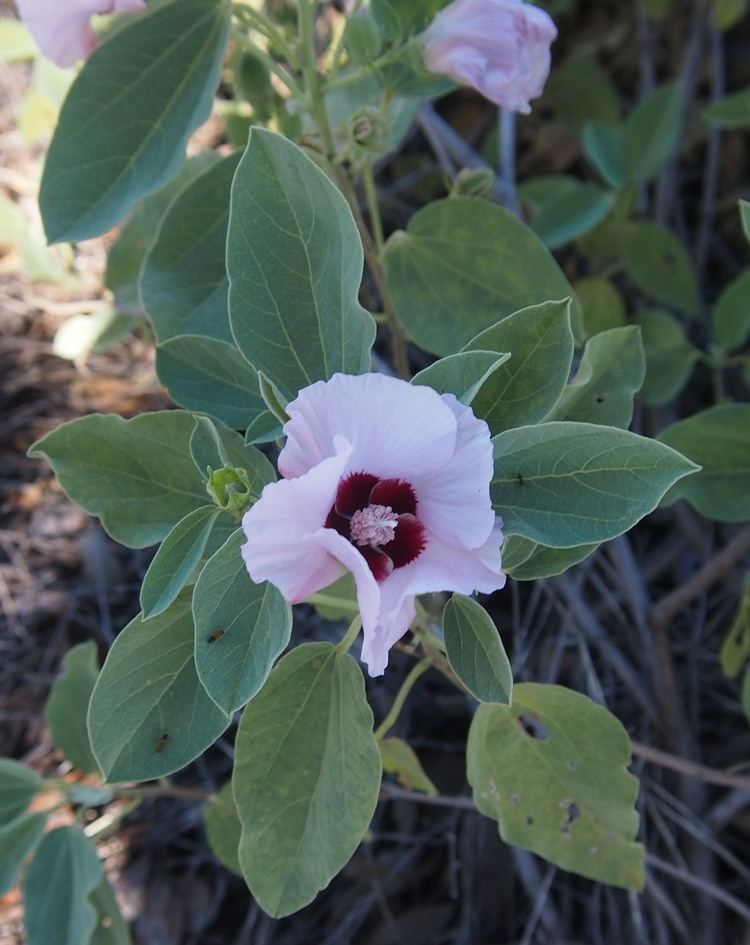
The Sturt's Desert Rose is found in sandy and gravelly soils, along dry creek beds, watercourses, gorges and rocky slopes. Adaptations for this plant include:
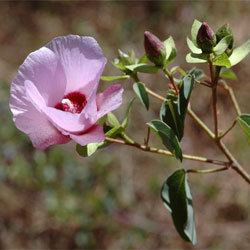
Sturt's Desert Rose contains gossypol, a chemical toxic to animals other than ruminants.
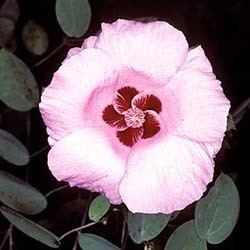
The Sturt's Desert Rose was discovered by Charles Sturt in 1844-45. In 1947, James Hamlyn Willis gave the shrub its current botanical name. It is not considered to be at risk in the wild. It is the floral emblem of the Northern Territory and appears in stylised form on the official flag with seven rather than five petals.
